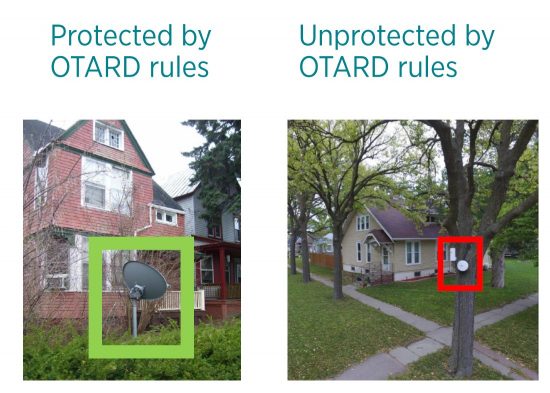I don’t understand the hype surrounding Non-Fungible Tokens (NFTs). As someone who has studied copyright and technology issues for years, maybe because it doesn’t seem very new to me. It’s just a remixing of some ideas and technologies that have been around for decades. Let me explain.
For at least 100 years, “ownership” of real property has been thought of as a “bundle of rights.” As a simple example, you may “own” the land your house sits on, but the city probably has a right to build and maintain a sidewalk across your yard and the general public has a right to walk across your property on that sidewalk. The gas company has the right to walk into your side yard to read your gas meter. Pilots have a right to fly over your house. Some other company or companies may have rights to any water and minerals in the ground below your house. Your homeowners association may even have a right to dictate what color you paint the exterior of your house.
This same “bundle of rights” concept also applies to copyright. Unless explicitly granted by contract, buying an original painting doesn’t mean you have the right to take a photograph of the painting and sell prints of the photograph. If you buy a DVD, you have the right to watch the DVD privately and you have the right to sell the DVD when you’re no longer interested in it. (That second right is called the “first sale doctrine” and there have been numerous Supreme Court cases and laws defining it’s exact boundaries.) But unless explicitly granted by contract, purchasing a DVD doesn’t mean you have the right to set up a projector and big screen and charge members of the public to watch it. That requires a “public performance” right.
When you buy most NFTs, you get very few of the rights that typically come with ownership. You might only get the right to privately exhibit the underlying work. And if you decide to later resell the NFT, the contract (which is embedded in digital code of the NFT) may stipulate that the original artist gets a 10% royalty on every future sale of the work.
The second thing you need to understand is the concept of “artificial scarcity.” As a simple example, in the art world, it’s common for photographers and painters to sell numbered, “limited edition” prints of their works. There’s no technological reason why they couldn’t print 1,000 copies of their work, or even register the print with a “print on demand” service that will continue making and selling prints as long as there are people who want to buy them. But limiting the number of prints made (even if each print is identical to any other print), is likely to raise the price. This is artificial scarcity. Most NFTs are an edition of one. Even if there are other exact copies of the underlying artwork sold as NFTs, each NFT is unique. This is like an artist selling numbered prints but not putting a limit on how many numbered prints they make. Each numbered print is technically unique because each has a different number. But without some artificial scarcity, the value of any one print may stay very low.
So if buying a NFT doesn’t get you any real rights and the scarcity is purely artificial, why are NFTs selling for hundreds of thousands of dollars? Here’s where all the technology really makes a difference. If you spend millions on a Picasso painting, you’re taking a lot of risks. First, you’re taking the risk that it’s a forgery, which would drop the value to near-zero. Second is the risk that the painting will be stolen from you. Insurance can help deal with both problems, but that adds more complications. If you’re buying the painting as an investment, these complications reduce the “liquidity” of the asset. Liquidity is the ease with which an asset can be converted into cash without affecting the market value of the asset. Put more simply, liquidity is how easily the asset can be sold. Cash has long been considered the most liquid asset, but NFTs are arguably much /more/ liquid than cash. NFTs don’t require anything physical to trade hands. And even electronic currency transfers take time and are subject to government oversight. NFTs are so new, they’re barely regulated. But by using blockchain technology, they can be easily and safely bought and sold anonymously. NFTs are a money launderers dream. It’s unclear if NFTs are actually being used to launder money, but it’s a concern.
The other reason I think NFTs are so popular is speculation. Because NFTs are so liquid and because there basically doesn’t even need to be an underlying work, the initial cost to “mint” (create) a NFT is near zero. And by using blockchain systems, NFTs can be resold with little overhead. (Though they can also be configured to ensure a certain overhead, e.g. that 10% of every resale goes to the original artist.) These characteristics, along with the newness of NFTs make it a popular marketplace for speculators, people who purchase assets with the intent of holding them for only a short time and then selling them for a profit.
NFTs started to enter the public consciousness in February 2021, after the 10-year old “Nyan cat” animation sold for over half a million dollars. This is also just a few weeks after the Gamestop stock short squeeze made a compelling case that average investors, working in concert, could upset the stock market and make millions. So it’s no wonder that there is rampant speculation in NFTs.
In conclusion, NFTs will be a tremendous benefit to digital artists, who did not previously have a way to easily prove the authenticity of their works (which is of tremendous importance to investors) or to provide a digital equivalent to numbered prints in the physical art world. But the hype about NFTs is just that. It’s driven by speculators and you’d be crazy to think of this as a worthy investment opportunity.



 Few things unify people in America more than beer and liquor regulations. On one side you have the forces of repression, who either favor strong liquor taxes and regulations on moralistic grounds, or because they favor curtailing competition and choice for a variety of reasons. On the other side you have those of us looking to end the insanity of quasi-Prohibitionary rules that do nothing to boost public health but do plenty to annoy the living hell out of us (and cost us plenty). And the really interesting thing is that these two groups contain plenty of people of radically different political persecutions. Liquor regulations are the greatest destroyer of political partisanship ever!
Few things unify people in America more than beer and liquor regulations. On one side you have the forces of repression, who either favor strong liquor taxes and regulations on moralistic grounds, or because they favor curtailing competition and choice for a variety of reasons. On the other side you have those of us looking to end the insanity of quasi-Prohibitionary rules that do nothing to boost public health but do plenty to annoy the living hell out of us (and cost us plenty). And the really interesting thing is that these two groups contain plenty of people of radically different political persecutions. Liquor regulations are the greatest destroyer of political partisanship ever! I was very sad to learn that James Gattuso
I was very sad to learn that James Gattuso 
 The Technology Liberation Front is the tech policy blog dedicated to keeping politicians' hands off the 'net and everything else related to technology.
The Technology Liberation Front is the tech policy blog dedicated to keeping politicians' hands off the 'net and everything else related to technology.